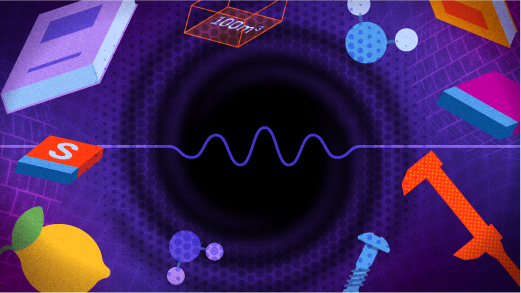How Feynman Diagrams Revolutionized Physics
Introduction
As one of the most famous physicists of the 20th century, Richard Feynman was known for a lot. Early in his career, he contributed to the development of the first atomic bomb as a group leader of the Manhattan Project. Hans Bethe, the scientific leader of the project who won a Nobel Prize in Physics in 1967 (two years after Feynman did), has been quoted on what set his protégé apart: “There are two types of genius. Ordinary geniuses do great things, but they leave you room to believe that you could do the same if only you worked hard enough. Then there are magicians, and you can have no idea how they do it. Feynman was a magician.”
In his 1993 biography Genius, James Gleick called Feynman “brash,” “ebullient” and “the most brilliant, iconoclastic and influential physicist of modern times.” Feynman captured the popular imagination when he played the bongo drums and sang about orange juice. He was a fun-loving, charismatic practical joker who toured America on long road trips. His colleague Freeman Dyson described him as “half genius and half buffoon.” At times, his oxygen-sucking arrogance rubbed some the wrong way, and his performative sexism looks very different to modern eyes. Feynman will also be remembered for his teaching: The lectures he delivered to Caltech freshmen and sophomores in 1962 set the gold standard in physics instruction and, when later published as a three-volume set, sold millions of copies worldwide.
What most people outside of the physics community are likely to be least familiar with is the work that counts as Feynman’s crowning scientific achievement. With physicists in the late 1940s struggling to reformulate a relativistic quantum theory describing the interactions of electrically charged particles, Feynman conjured up some Nobel Prize-winning magic. He introduced a visual method to simplify the seemingly impossible calculations needed to describe basic particle interactions. As Gleick put it in Genius, “He took the half-made conceptions of waves and particles in the 1940s and shaped them into tools that ordinary physicists could use and understand.” Through the work of Feynman, Dyson, Julian Schwinger and Sin-Itiro Tomonaga, a new and improved theory of quantum electrodynamics was born.
Feynman’s lines and squiggles, which became known as Feynman diagrams, have since “revolutionized nearly every aspect of theoretical physics,” wrote the historian of science David Kaiser in 2005. “In the same way that computer-enabled computation might today be said to be enabling a genomic revolution, Feynman diagrams helped to transform the way physicists saw the world, and their place in it.”
To learn more about Feynman diagrams and how they’ve changed the way physicists work, watch our new In Theory video:
Decades later, as Natalie Wolchover reported in 2013, “it became apparent that Feynman’s apparatus was a Rube Goldberg machine.” Even the collision of two subatomic particles called gluons to produce four less energetic gluons, an event that happens billions of times a second during collisions at the Large Hadron Collider, she wrote, “involves 220 diagrams, which collectively contribute thousands of terms to the calculation of the scattering amplitude.” Now, a group of physicists and mathematicians is studying a geometric object called an “amplituhedron” that has the potential to further simplify calculations of particle interactions.
Meanwhile, other physicists hope that emerging connections between Feynman diagrams and number theory can help identify patterns in the values generated from more complicated diagrams. As Kevin Hartnett reported in 2016, understanding these patterns could make particle calculations much simpler, but like the amplituhedron approach, this is still a work in progress.
“Feynman diagrams remain a treasured asset in physics because they often provide good approximations to reality,” wrote the Nobel Prize-winning physicist Frank Wilczek three years ago. “They help us bring our powers of visual imagination to bear on worlds we can’t actually see.”
If you liked the fifth and final episode from season two of Quanta’s In Theory video series, you may also enjoy our previous videos on universality, quantum gravity, emergence and turbulence.




